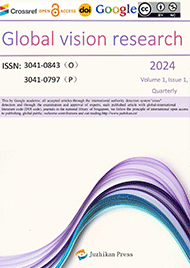 65 84368249
65 84368249 info@juzhikan.asia
info@juzhikan.asia 65 84368249
65 84368249 info@juzhikan.asia
info@juzhikan.asia
King’s College London
Abstract:The integration of pluripotent stem cells (PSCs) into the field of regenerative medicine and dentistry represents a significant advancement, particularly in the context of angiogenesis, a fundamental process for tissue repair and regeneration. PSCs possess the distinctive capacity to differentiate into a diverse range of cell types, among which are cells instrumental in the formation of new blood vessels. This capability is crucial for ensuring the successful integration and functionality of regenerated tissues by providing them with essential nutrients and oxygen through newly formed vascular networks. In regenerative medicine, PSC-driven angiogenesis offers promising strategies for restoring damaged organs, such as the heart and liver, by enhancing tissue vascularization. Similarly, regenerative dentistry opens new avenues for the reconstruction of complex dental tissues, including periodontal ligament, dental pulp, and alveolar bone, which require adequate blood supply for healing and regeneration. This review discusses the potential of PSC-mediated angiogenesis in both fields, addressing the mechanisms of action, current research progress, and the challenges that need to be overcome to translate these findings into clinical applications. The exploration of PSC-induced angiogenesis paves the way for innovative treatments, aiming to improve patient outcomes through enhanced tissue regeneration.
Keywords:Pluripotent stem cells Regenerative medicine Angiogenesis
Reference
[1]Anon (n.d.) Embryonic Stem Cell Lines Derived from Human Blastocysts. [online]. Available from:
[2]https://zero.sci-hub.ru/1139/4e3a1cd4907a4695c35db75eb91b6e7d/thomson1998.pdf#navpanes=0&view=FitH (Accessed 9 March 2024).
[3]Carmeliet, P. & Jain, R. K. (2011) Molecular mechanisms and clinical applications of angiogenesis. Nature. [Online] 473 (7347), 298–307.
[4]Chen, T. et al. (2015) MicroRNA-199b Modulates Vascular Cell Fate During iPS Cell Differentiation by Targeting the Notch Ligand Jagged1 and Enhancing VEGF Signaling. Stem Cells (Dayton, Ohio). [Online] 33 (5), 1405–1418.
[5]Gronthos, S. et al. (1994) The STRO-1+ fraction of adult human bone marrow contains the osteogenic precursors. Blood. 84 (12), 4164–4173.
[6]Grskovic, M. et al. (2011) Induced pluripotent stem cells — opportunities for disease modelling and drug discovery. Nature Reviews Drug Discovery. [Online] 10 (12), 915–929.
[7]Hu, G. et al. (2015) Exosomes secreted by human-induced pluripotent stem cell-derived mesenchymal stem cells attenuate limb ischemia by promoting angiogenesis in mice. Stem Cell Research & Therapy. [Online] 6 (1), 10.
[8]Hynes, K. et al. (2012) Clinical utility of stem cells for periodontal regeneration. Periodontology 2000. [Online] 59 (1), 203–227.